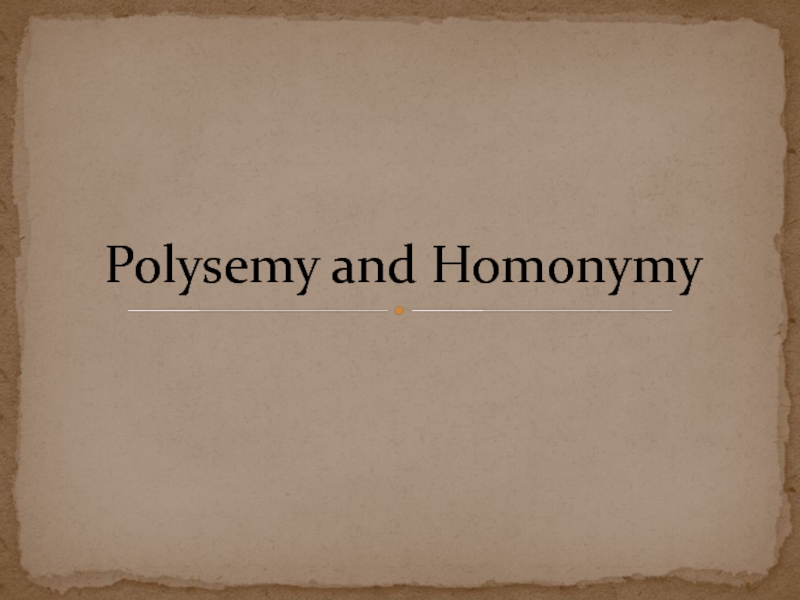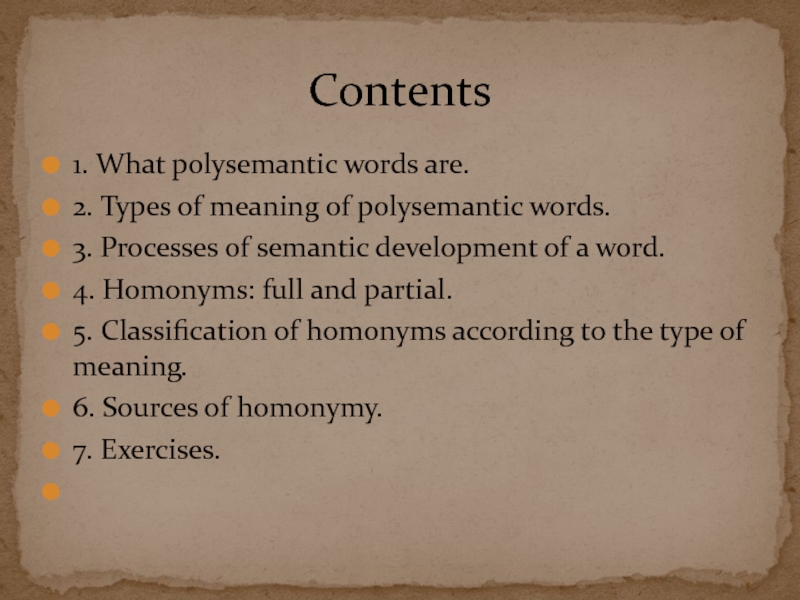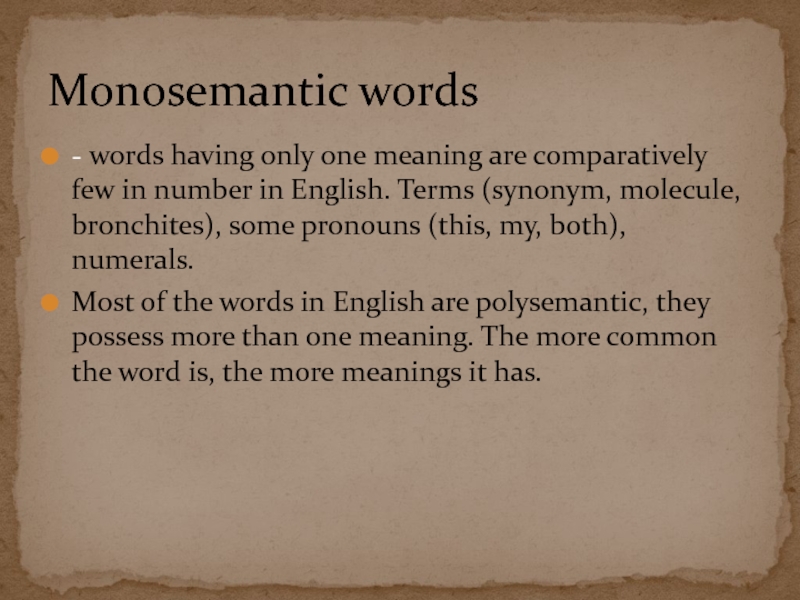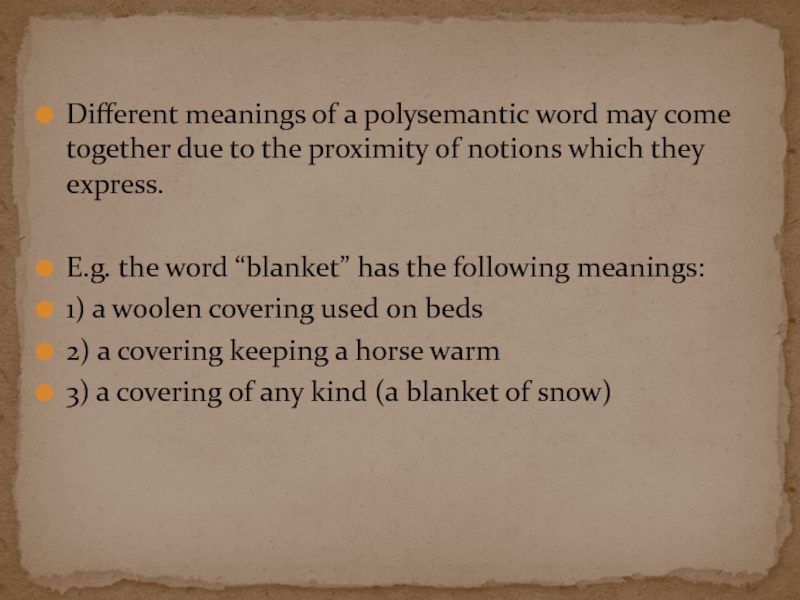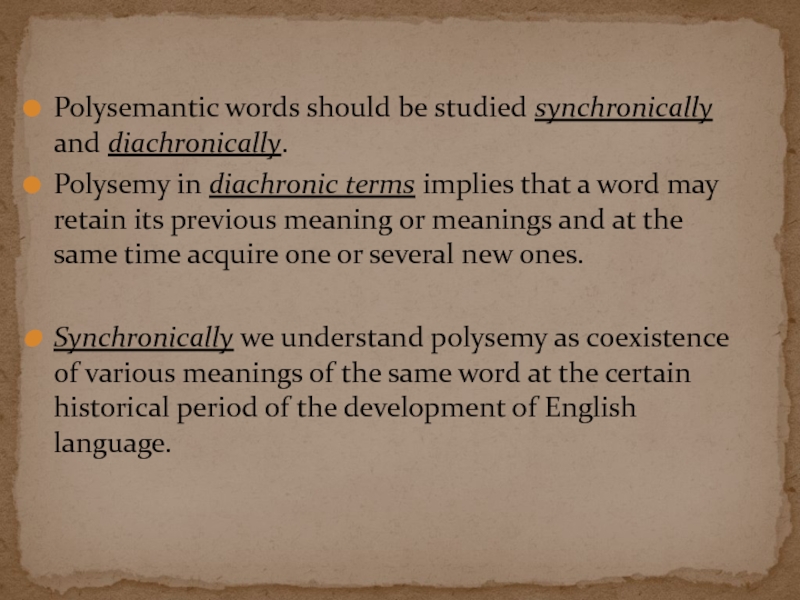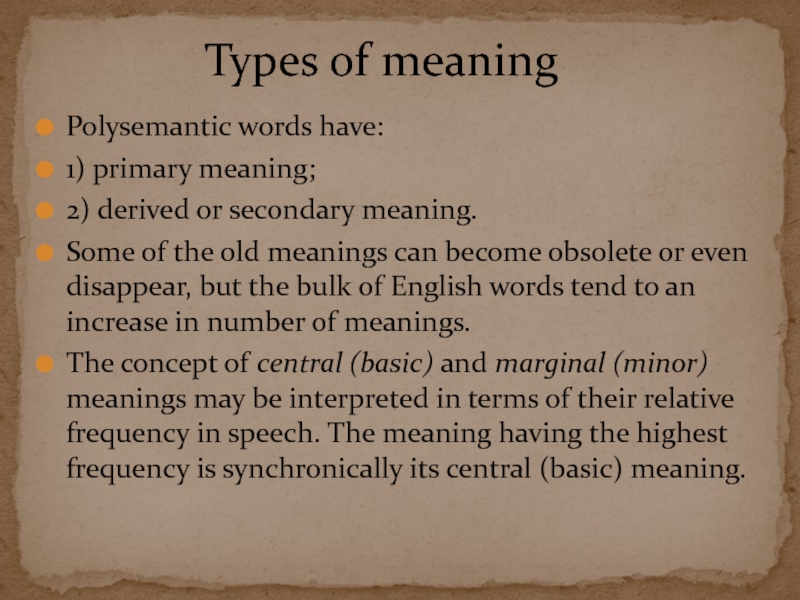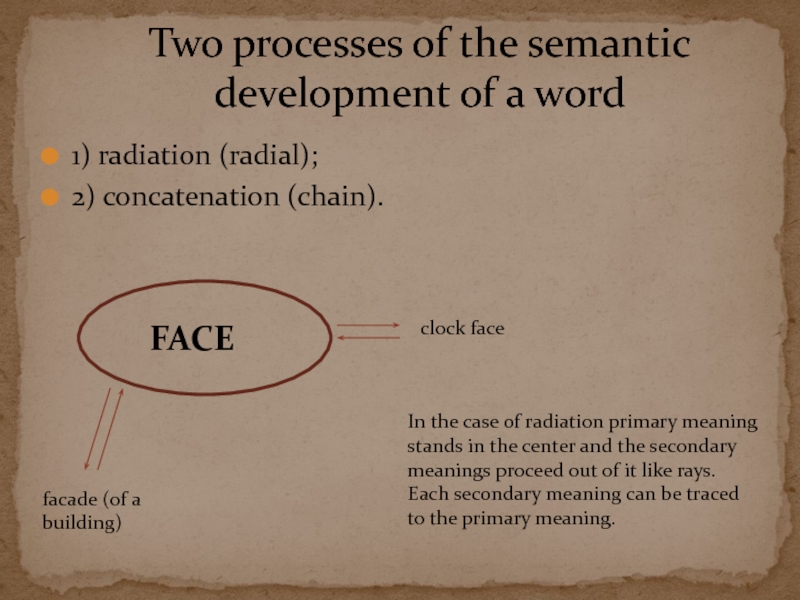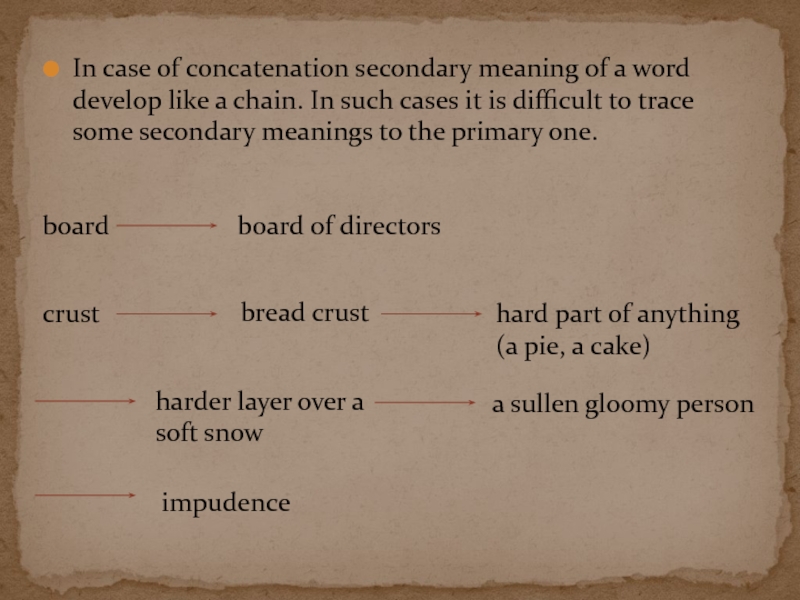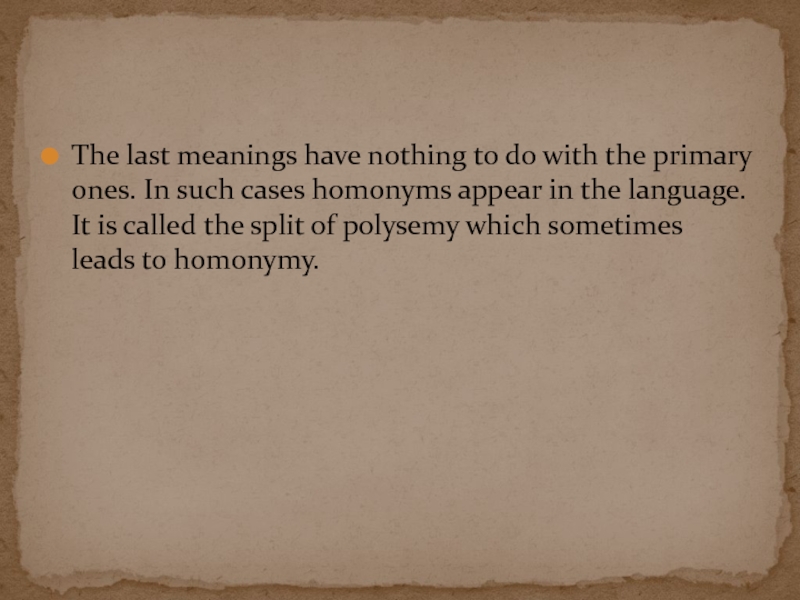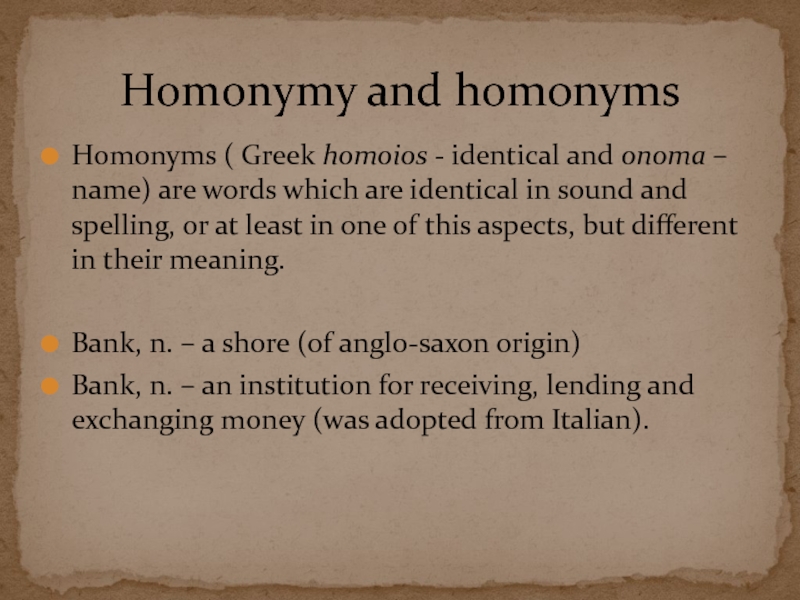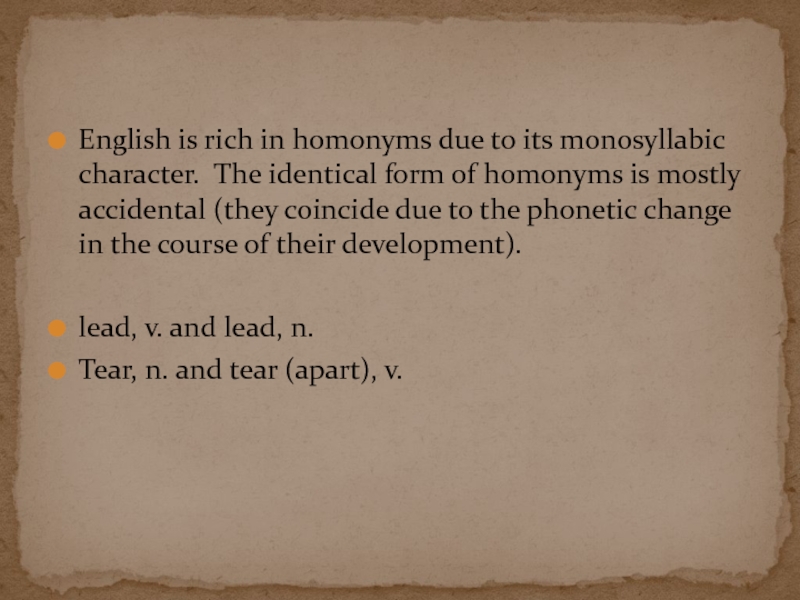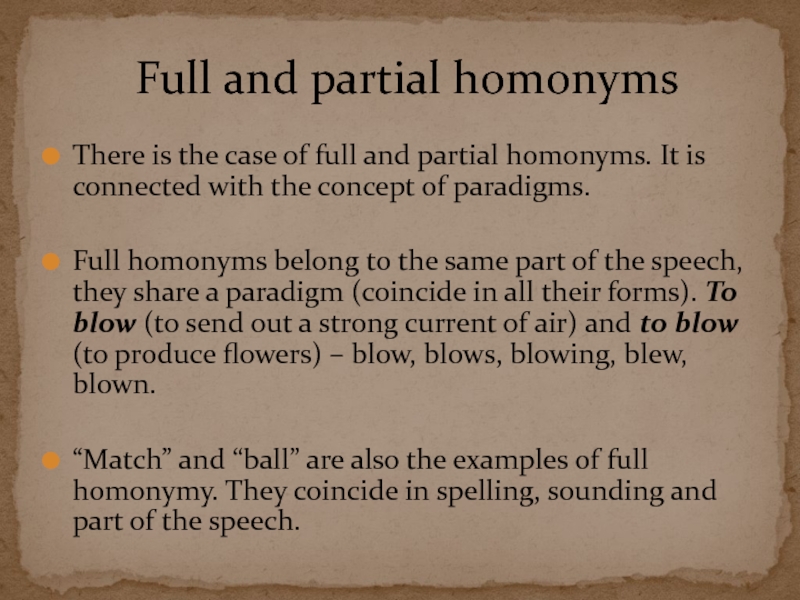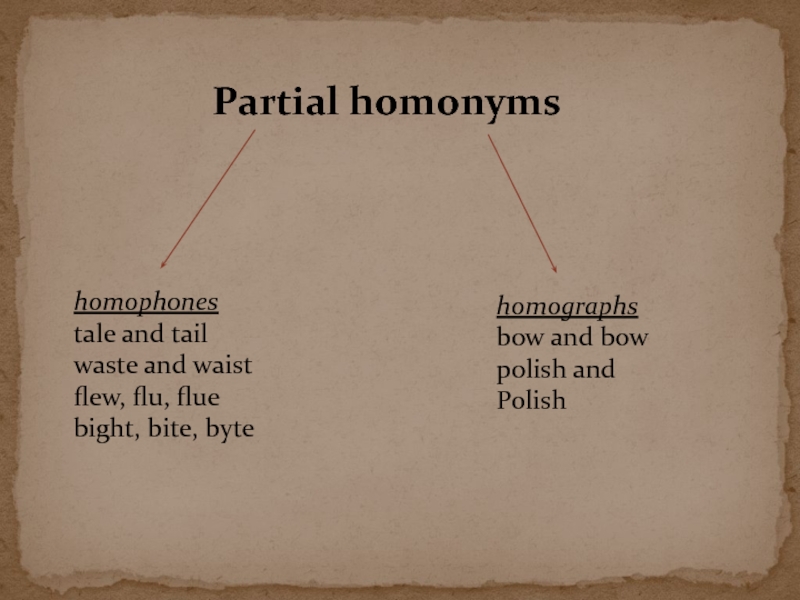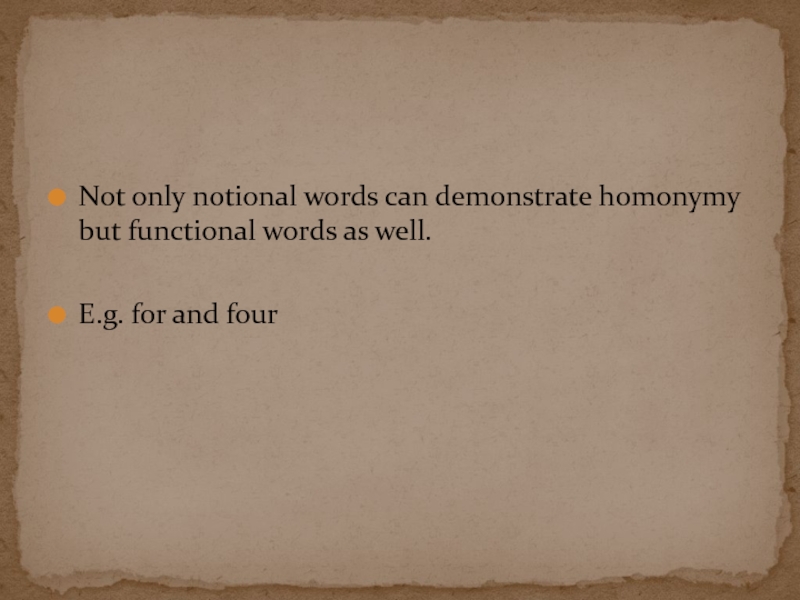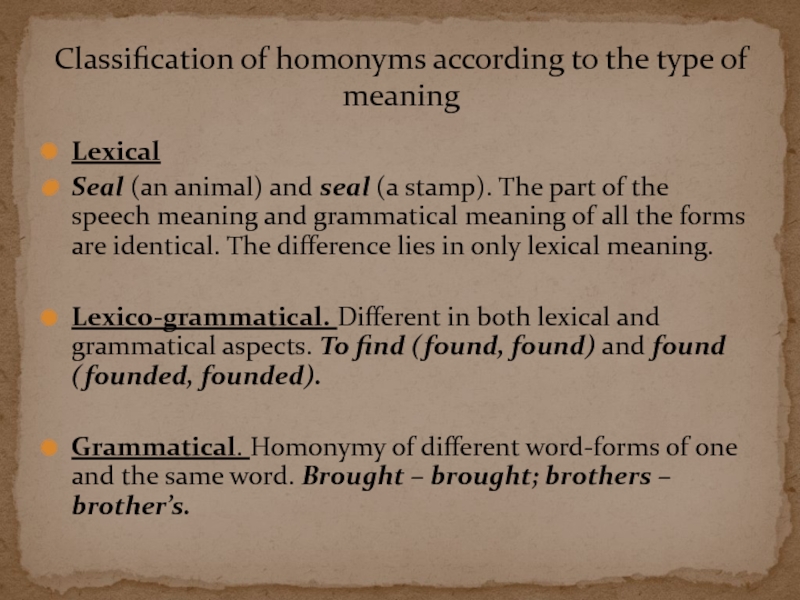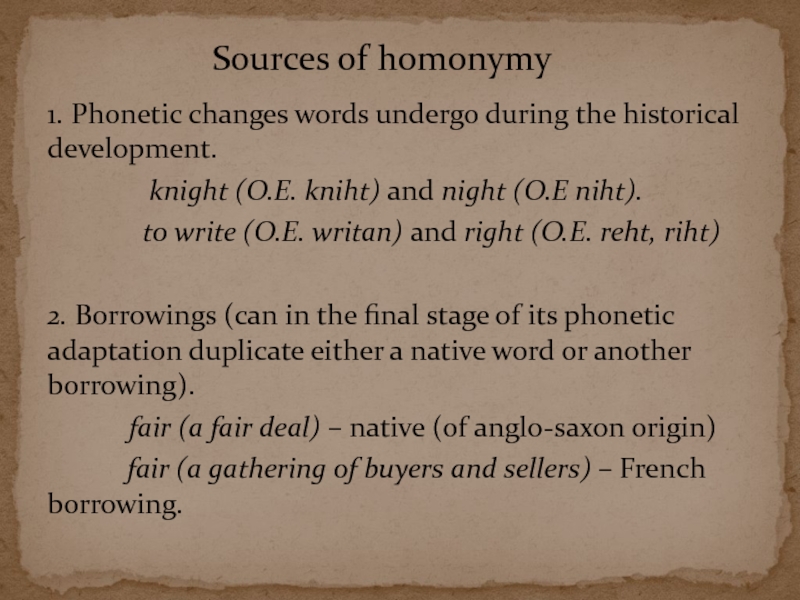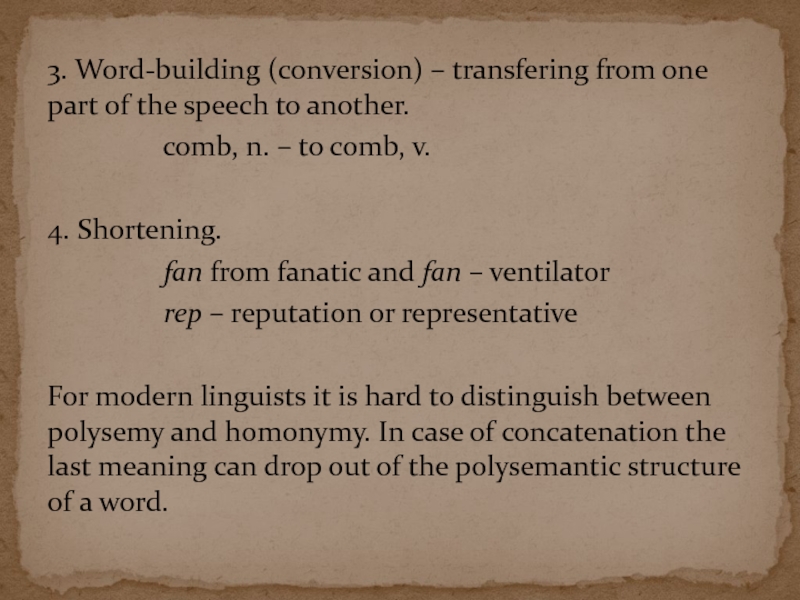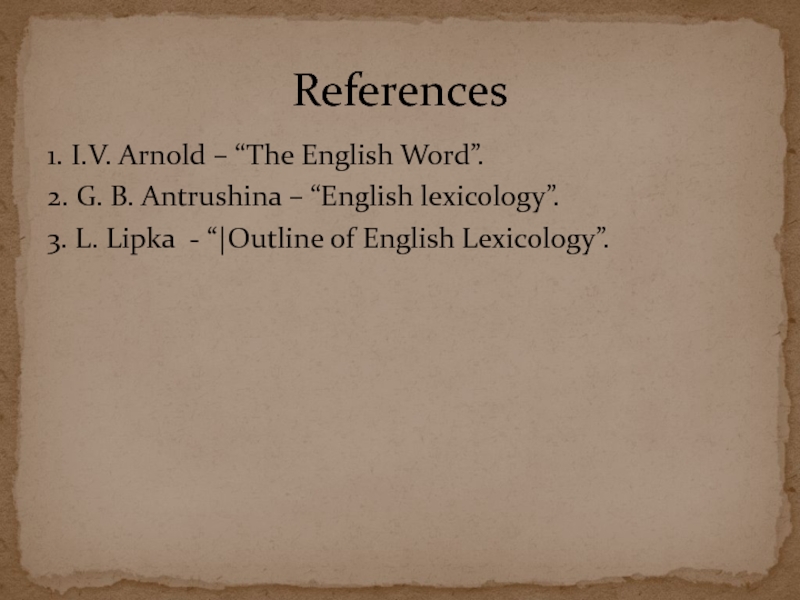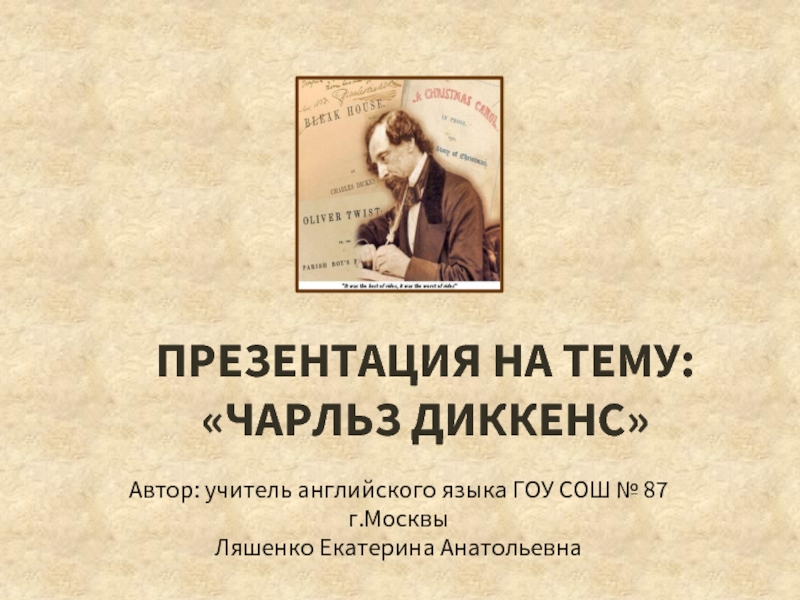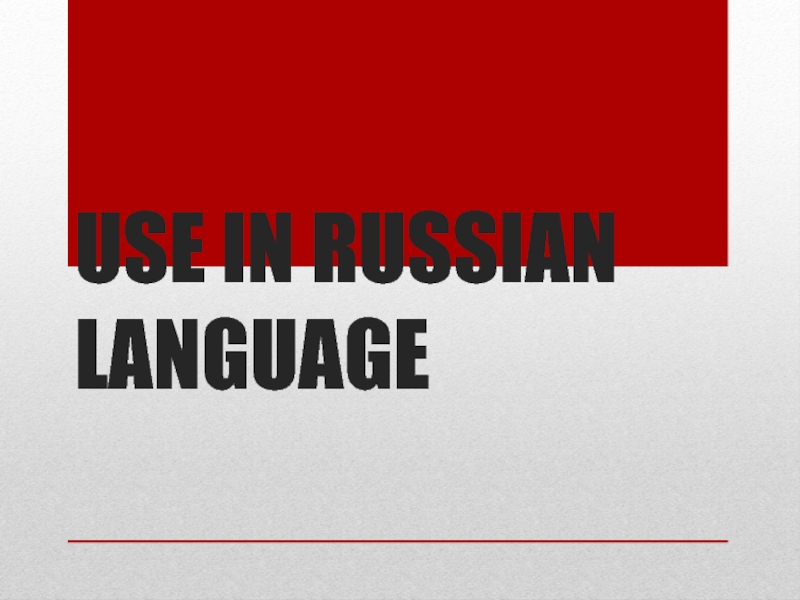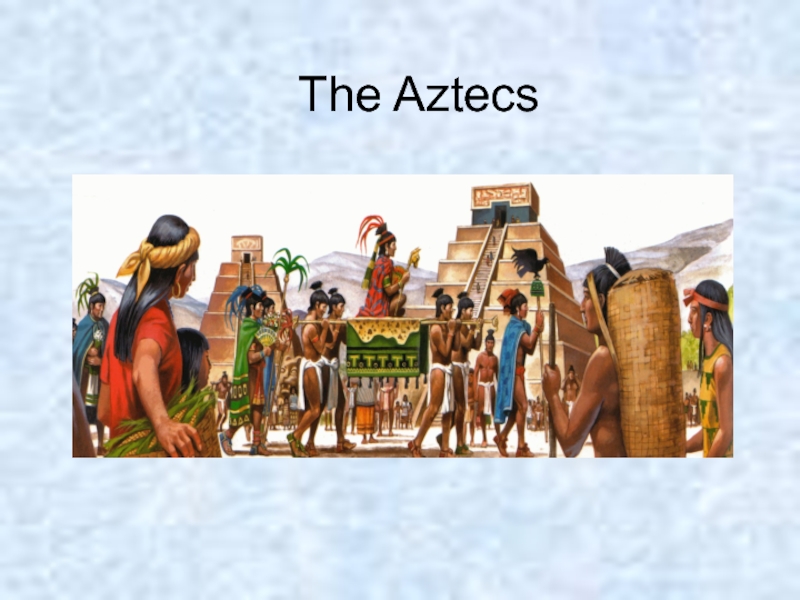- Главная
- Разное
- Дизайн
- Бизнес и предпринимательство
- Аналитика
- Образование
- Развлечения
- Красота и здоровье
- Финансы
- Государство
- Путешествия
- Спорт
- Недвижимость
- Армия
- Графика
- Культурология
- Еда и кулинария
- Лингвистика
- Английский язык
- Астрономия
- Алгебра
- Биология
- География
- Детские презентации
- Информатика
- История
- Литература
- Маркетинг
- Математика
- Медицина
- Менеджмент
- Музыка
- МХК
- Немецкий язык
- ОБЖ
- Обществознание
- Окружающий мир
- Педагогика
- Русский язык
- Технология
- Физика
- Философия
- Химия
- Шаблоны, картинки для презентаций
- Экология
- Экономика
- Юриспруденция
Polysemy and homonymy презентация
Содержание
- 1. Polysemy and homonymy
- 2. 1. What polysemantic words are. 2. Types
- 3. - words having only one meaning are
- 4. Different meanings of a polysemantic word may
- 5. Polysemantic words should be studied synchronically and
- 6. Polysemantic words have: 1) primary meaning; 2)
- 7. 1) radiation (radial); 2) concatenation (chain).
- 8. In case of concatenation secondary meaning of
- 9. The last meanings have nothing to do
- 10. Homonyms ( Greek homoios - identical and
- 11. English is rich in homonyms due to
- 12. There is the case of full and
- 13. Partial homonyms homophones tale and tail waste
- 14. Not only notional words can demonstrate homonymy
- 15. Lexical Seal (an animal) and seal
- 16. 1. Phonetic changes words undergo during the
- 17. 3. Word-building (conversion) – transfering from one
- 18. 1. I.V. Arnold – “The English Word”.
Слайд 21. What polysemantic words are.
2. Types of meaning of polysemantic words.
3.
4. Homonyms: full and partial.
5. Classification of homonyms according to the type of meaning.
6. Sources of homonymy.
7. Exercises.
Contents
Слайд 3- words having only one meaning are comparatively few in number
Most of the words in English are polysemantic, they possess more than one meaning. The more common the word is, the more meanings it has.
Monosemantic words
Слайд 4Different meanings of a polysemantic word may come together due to
E.g. the word “blanket” has the following meanings:
1) a woolen covering used on beds
2) a covering keeping a horse warm
3) a covering of any kind (a blanket of snow)
Слайд 5Polysemantic words should be studied synchronically and diachronically.
Polysemy in diachronic terms
Synchronically we understand polysemy as coexistence of various meanings of the same word at the certain historical period of the development of English language.
Слайд 6Polysemantic words have:
1) primary meaning;
2) derived or secondary meaning.
Some of the
The concept of central (basic) and marginal (minor) meanings may be interpreted in terms of their relative frequency in speech. The meaning having the highest frequency is synchronically its central (basic) meaning.
Types of meaning
Слайд 71) radiation (radial);
2) concatenation (chain).
Two processes of the semantic development of
FACE
facade (of a building)
clock face
In the case of radiation primary meaning stands in the center and the secondary meanings proceed out of it like rays. Each secondary meaning can be traced to the primary meaning.
Слайд 8In case of concatenation secondary meaning of a word develop like
board
board of directors
crust
bread crust
hard part of anything (a pie, a cake)
harder layer over a soft snow
a sullen gloomy person
impudence
Слайд 9The last meanings have nothing to do with the primary ones.
Слайд 10Homonyms ( Greek homoios - identical and onoma – name) are
Bank, n. – a shore (of anglo-saxon origin)
Bank, n. – an institution for receiving, lending and exchanging money (was adopted from Italian).
Homonymy and homonyms
Слайд 11English is rich in homonyms due to its monosyllabic character. The
lead, v. and lead, n.
Tear, n. and tear (apart), v.
Слайд 12There is the case of full and partial homonyms. It is
Full homonyms belong to the same part of the speech, they share a paradigm (coincide in all their forms). To blow (to send out a strong current of air) and to blow (to produce flowers) – blow, blows, blowing, blew, blown.
“Match” and “ball” are also the examples of full homonymy. They coincide in spelling, sounding and part of the speech.
Full and partial homonyms
Слайд 13Partial homonyms
homophones
tale and tail
waste and waist
flew, flu, flue
bight, bite, byte
homographs
bow and
polish and Polish
Слайд 14Not only notional words can demonstrate homonymy but functional words as
E.g. for and four
Слайд 15Lexical
Seal (an animal) and seal (a stamp). The part of
Lexico-grammatical. Different in both lexical and grammatical aspects. To find (found, found) and found (founded, founded).
Grammatical. Homonymy of different word-forms of one and the same word. Brought – brought; brothers – brother’s.
Classification of homonyms according to the type of meaning
Слайд 161. Phonetic changes words undergo during the historical development.
to write (O.E. writan) and right (O.E. reht, riht)
2. Borrowings (can in the final stage of its phonetic adaptation duplicate either a native word or another borrowing).
fair (a fair deal) – native (of anglo-saxon origin)
fair (a gathering of buyers and sellers) – French borrowing.
Sources of homonymy
Слайд 173. Word-building (conversion) – transfering from one part of the speech
comb, n. – to comb, v.
4. Shortening.
fan from fanatic and fan – ventilator
rep – reputation or representative
For modern linguists it is hard to distinguish between polysemy and homonymy. In case of concatenation the last meaning can drop out of the polysemantic structure of a word.
Слайд 181. I.V. Arnold – “The English Word”.
2. G. B. Antrushina –
3. L. Lipka - “|Outline of English Lexicology”.
References
